A Quick Guide to the Major Los Angeles DUI Laws
 Police have charged you with a DUI, and now you’ve got a lot of questions and concerns.
Police have charged you with a DUI, and now you’ve got a lot of questions and concerns.
• Exactly what do the charges against you mean?
• What legal issues are you facing?
 Police have charged you with a DUI, and now you’ve got a lot of questions and concerns.
Police have charged you with a DUI, and now you’ve got a lot of questions and concerns.
• Exactly what do the charges against you mean?
• What legal issues are you facing?
Los Angeles County saw an alarming increase in the number of hit-and-run crashes in 2015, the last year for which statistics are available. According to a report from the NBC4 I-Team, the California Highway Patrol reported that the county experienced more than 28,000 such crashes in 2015. The report also revealed that 50 percent of all crashes in Los Angeles County are hit-and-run. (Compare that to the national figures; the American Automobile Association says that 11 percent of all crashes nationwide are hit-and-run.)
But California is not alone in the increasing number of hit-and-runs. New York, Florida and North Carolina are among the states also reporting big jumps in the number of crashes where drivers flee the scene.
The AAA Foundation for Traffic Safety reports that hit-and-run drivers kill nearly 1,500 people annually:
Have you heard the one about the driver who was arrested for DUI because he had a caffeine high? Or about the state legislator who successfully argued that cough syrup and a breath spray caused a false positive DUI breathalyzer reading?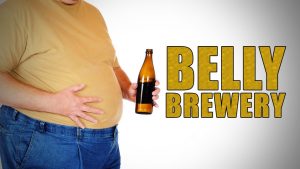
While law enforcement officers and courts generally accept breathalyzer tests as proof that someone was driving under the influence, those tests can sometimes give false positive readings. As absurd as these stories sound, to the people wrongfully arrested for DUIs, these incidents are no laughing matter.
Betrayed by their bodies
The police recently picked you up for DUI—maybe even for the second or third time—and you’re finally ready to admit that you have an alcohol problem. You know you need assistance, but where do you go to find it? And how do you know which program is most likely to help you?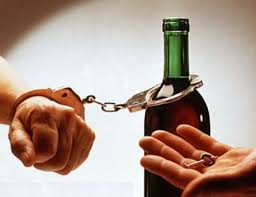
These seemingly simple questions can lead to a raft of conflicting, challenging decisions. It is almost shockingly difficult to find objective reviews of the various treatment options available as well as clear data about which approaches work best for different types of people.
This post aims to shine a light on this murky subject. Let’s explore. Where can you go for help? What programs are even out there?
Most drivers today are conscious of the harm they can do by getting behind the wheel after drinking and driving. But what about after texting and driving?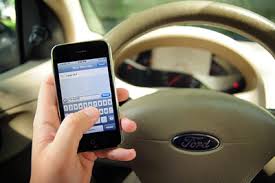
Text messaging makes a crash 23 times more likely to happen. (Dialing a cell phone increases crash risk by 2.8 times; talking or listening 1.3 times; and reaching for a device 1.4 times.)
While they may not realize how serious the problem is, most people understand that it’s better to avoid texting when they’re behind the wheel. A 2014 survey conducted by AT& revealed that 98 percent of motorists who own cellphones and text regularly are aware of the driving/texting danger, but about 75 percent of them do it anyway.
How do officers working for Los Angeles Police Department (LAPD) determine whether they should stop someone for a DUI? 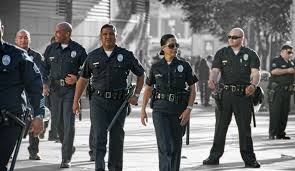
All LAPD officers receive substantial training that helps them understand what to look for when patrolling L.A.’s freeways and surface streets for dangerous drivers—and drivers who might be under the influence. Police officers are human, however, so they can forget what they learned (or just ignore proper procedure) and make errors during the arrest process itself.
LAPD officers’ DUI training has changed considerably over the decades, according to the department’s website. Back in the 1970s, police departments in most jurisdictions, including Los Angeles, had no standards-based roadside sobriety tests to help them determine and document whether or not a person was driving while under the influence of alcohol. So different states (and different officers) developed their own versions of the sobriety tests.
“Come on, it’ll be okay. You haven’t had that much to drink. And anyway, I’ve seen you drive after you’ve had six or seven beers—you’ll do just fine.”
Ever had a conversation like that with a friend when you’ve been out socializing for the night? Chances are that you’ll yield to your friend’s persuasions and get behind the wheel, ignoring the small voice of reason inside your head that’s warning you’re about to do something stupid.
So if we know something is a bad idea, why do we do it anyway? Why don’t we choose to hang out with somebody who would give us better advice and encourage us to engage in less risky behavior? It’s a complicated answer that relates to the way our brain works and how we interact with those around us.
For some people, the thought of autonomous vehicles opens up a range of partying possibilities. They imagine hanging out all night with friends, drinking whatever they’d like, and then getting into their own cars, which will drive them safely home. They won’t have to worry about getting pulled over for a DUI because the vehicle won’t swerve, run stop lights or travel erratically. The artificial intelligence that’s controlling their vehicle won’t be affected by its owner’s alcohol consumption. 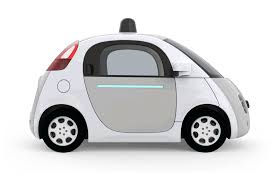
While that scenario could become a reality at some point, it’s not likely that it will occur any time in the immediate future. For one thing, self-driving vehicles have a long way to go before they become feasible and/or widely accepted everywhere in the U.S. Plus, under most current scenarios, at least one human occupant has to sit behind the wheel of the vehicle and that human occupant (not the computer) is ultimately responsible for its operation. To accept that responsibility, that person will have to remain sober.
Autonomous Vehicles Today
 When you see a police car’s flashing lights in your rearview mirror, your first thought is probably something like “I hope they’re not after me.” But when it becomes clear that your vehicle is indeed the one that the officer is motioning over to the side of the road, you may start to panic—especially if you’ve spent the last few hours in the company of friends and have enjoyed an alcoholic beverage during that time.
When you see a police car’s flashing lights in your rearview mirror, your first thought is probably something like “I hope they’re not after me.” But when it becomes clear that your vehicle is indeed the one that the officer is motioning over to the side of the road, you may start to panic—especially if you’ve spent the last few hours in the company of friends and have enjoyed an alcoholic beverage during that time.
Your behavior during the traffic stop and in the hours immediately following that stop could have a significant impact on your life, affecting everything from your ability to drive to your bank account. Follow these guidelines to ensure that you are taking every possible step to protect your rights and your future.
When the officer motions you over:
Was one of your resolutions this year not to get behind the wheel of your vehicle if you’ve been drinking? How are you doing at keeping it? If you’re like most other people, now that we’re almost one month into 2017 many of your well-intentioned goals for changing your life have already gone by the wayside. 
But there is a way to increase your success dramatically—and it’s not that hard to put into practice. It’s a technique that psychologists call implementation planning (or in less formal terms, if-then planning). You can employ this technique when you’re trying to lose weight, get a better handle on your emails at work or even when you’re trying to ensure that you don’t end up with a DUI conviction on your driving record.
The concept of using if-then statements to achieve a goal is not new; Peter Gollwitzer, a psychology professor at NYU, introduced the idea back in the 1990s. But people are revisiting the technique because studies have shown that this technique works extremely well in changing habits and helping people achieve desired behaviors.